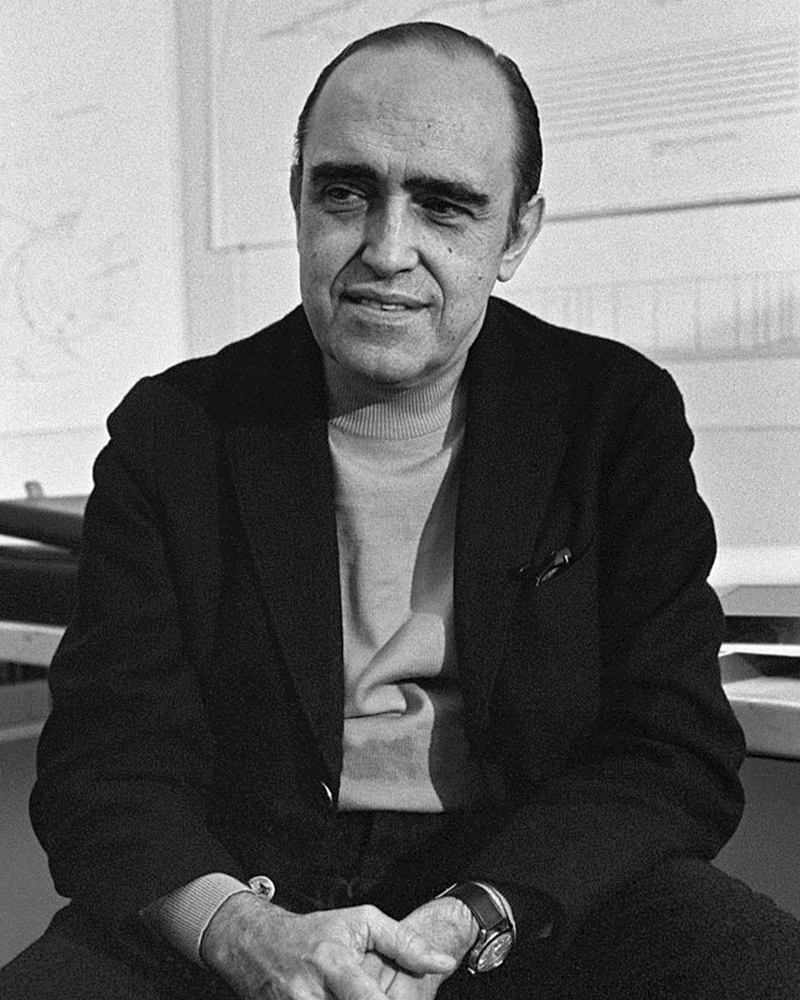Side Gallery
Side Gallery
WishlistFollow
Follow
OSCAR NIEMEYER: INTERVIEW (2009)
OSCAR NIEMEYER:
INTERVIEW
BRAZIL
MAY 2009
In rare interview 3 years before his death Oscar Niemeyer, represented by Side Gallery, highlighted some of the most important projects of his career. A certain aspect of Niemeyer’s career, in which he discusses in detail, is his relationship with the renowned French architect and designer Le Corbusier. In October 2018, Side Gallery presented the exhibition “Influences and counter influences on modern design”, exploring the relationship between the two architects.
Niemeyer early on in his career, joined the office of the architect and town planner Lúcio Costa, one of the few modernists practicing in Brazil at that time. Costa invited the celebrated Swiss Modernist Le Corbusier to Rio in 1929 and then again in 1936. By the time of the second visit, Costa had promoted Niemeyer to the team formed to design a new ministry of education building. As a result, Niemeyer spent much time with Le Corbusier and was permanently influenced by his vision of a new architecture, but also sought changes to the Frenchmans’s vison. As he says in the video, working on the project of Pampulha, Niemeyer, desired an outcome, lighter and rooted in Brazilian architecture, contra to the design proposal of Le Corbusier.



"As a result, Niemeyer spent much time with Le Corbusier and was permanently influenced by his vision of a new architecture, but also sought changes to the Frenchmans’s vision"
In 1947, Oscar was invited by the United Nations (UN) to participate in the commission of architects in charge of outlining the plans for the future headquarters in New York. Niemeyer’s plans were chosen for the definitive project, Niemeyer expresses Le Corbusier’s dislike of plans, and how the French architect persuaded the Brazilian to move the General Assembly, and place it at the center of the plot, one of Niemeyer biggest regrets of his career.
In 1956 at the invitation of the President of the Republic, Juscelino Kubitschek, asked Niemeyer to collaborate in the construction of the new capital of Brazil, Brasília, whose urban plan was entrusted to Lucio Costa. In 1958, he was appointed chief architect of Brasília, where he transferred to and remained until 1960. The capital is a pure example of Niemeyer’s magic resistance to conform to the times.

Oscar Niemeyer (Rio de Janeiro RJ 1907 - Rio de Janeiro RJ 2012) was one of the greatest Brazillian architects and urbanists. He is celebrated in Brazil and across the world for his extraordinary work. Niemeyer may be known for his acclaimed architecture, but his lesser-known qualities are his relentless desire to design and his determination to resist conformity.
Niemeyer graduated in architecture from the National School of Fine Arts (Enba), in Rio de Janeiro, in 1934. That same year, he worked for the architect and urban planner Lucio Costa (1902-1998). In 1936, the office was commissioned to create plans for the Ministry of Education and Health (MES), in Rio de Janeiro, under the supervision of the French-Swiss architect Le Corbusier(1887-1965), whom Niemeyer assisted, as a draftsman. Based on the architect's design, Niemeyer suggested changes that were consequently implemented into the construction of the building. Between 1940 and 1944, at the request of mayor Belo Horizonte, Juscelino Kubitschek (1902-1976), Niemeyer designed the Pampulha Architectural Ensemble, which is considered a landmark of his work. It breaks with the strict concepts of functionalism, using a new language of forms, curved surfaces, and explores the possibilities of reinforced concrete. In 1947, he was invited by the United Nations (UN) to participate in the commission of architects in charge of outlining the plans for New York's future headquarters. His plans, conceptualized by Le Corbusier, were chosen as the basis for the final project.
In Rio de Janeiro, in 1955, he founded the magazine Módulo. The President of the Republic, Juscelino Kubitschek, invited Niemeyer to collaborate on Lucio Costa's urban design of the new capital of Brazil, Brasília, the following year. In 1958, he was appointed chief architect of Brasília, where he transferred to and remained until 1960. Some of Niemeyer's more notable projects are Ibirapuera Park, São Paulo, 1951, the headquarters of the French Communist Party, Paris, 1965 Algiers School of Architecture, Algeria, 1968 the headquarters of Editora Mondadori, Milan, Italy, 1968 and the headquarters of the newspaper L'Humanité, Saint-Denis, France, 1987.